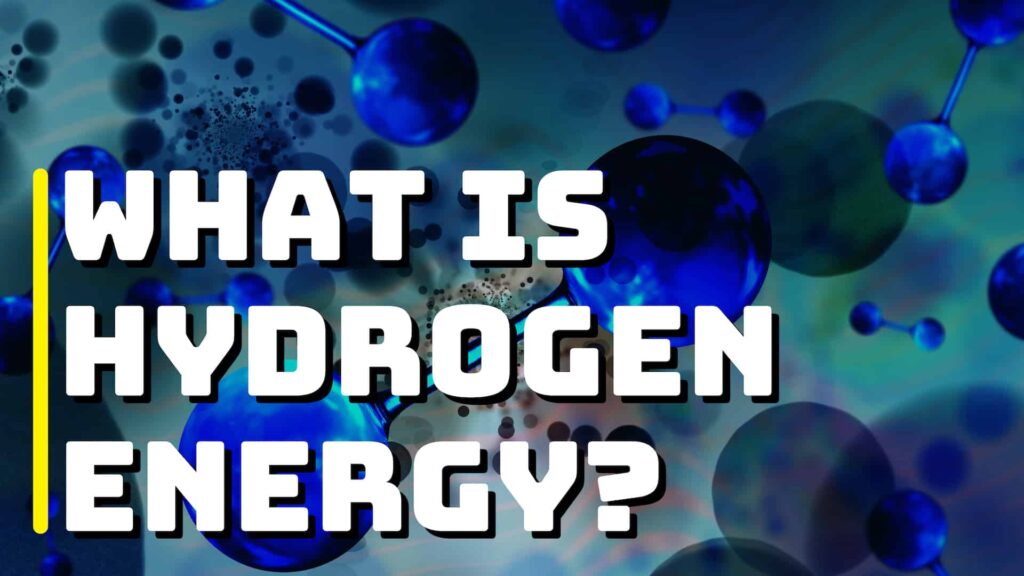From green hydrogen to pink hydrogen, in this video we explain the rainbow of colors and the different types of technologies used to make each one of them.
Now the question is: Isn’t hydrogen a colorless gas? Yes, it is. Hydrogen is a colorless gas. So, despite their colorful descriptions, there is actually no difference between the different forms of hydrogen.
So why are there so many different names given to a colorless gas?
Green hydrogen, blue hydrogen, brown hydrogen, and even yellow hydrogen, turquoise hydrogen, and pink hydrogen are all forms of hydrogen.
They are simply color codes or nicknames used in the energy business to distinguish between different forms of hydrogen and how they were created.
Different colors are assigned to hydrogen depending on the method of synthesis. Keep in mind that the meaning of the color can change over time and even between countries.
Let’s take a look at some of these definitions, starting with green hydrogen.
Green hydrogen
Green hydrogen is the color designated to the type of hydrogen that does not generate greenhouse gas emissions from all the options in the rainbow of hydrogen colors. Green hydrogen is created by electrolyzing water with clean electricity generated by renewable energy sources such as solar or wind power.
Electrolyzers use an electrochemical reaction to divide water into its elements, hydrogen and oxygen, without making any carbon dioxide.
Green hydrogen currently accounts for a small portion of the total hydrogen production due to the high cost of generation. As green hydrogen becomes more common, it will become cheaper, and the price will directly depend on the cost of renewable energy.
Blue hydrogen
Blue hydrogen is mostly created from natural gas through a process known as steam methane reforming, or SMR, which combines natural gas with heated water in the form of steam. The byproduct is carbon dioxide, but the output is hydrogen. As a result, carbon capture and storage (CCS) is required to capture and store this carbon.
Blue hydrogen is sometimes referred to as “low-carbon hydrogen”, despite the fact that the steam reforming method does not prevent the production of greenhouse gasses.
Blue hydrogen is frequently stated as having zero or low greenhouse gas emissions. However, this is not the case: not all CO2 (carbon dioxide) emissions can be captured, and some CO2 is emitted during the creation of blue hydrogen.
Grey hydrogen
To date, this has proven to be the most widespread method of producing hydrogen. Grey hydrogen is produced by the steam methane reformation of natural gas without the removal of the greenhouse gasses that are released throughout the process.
It is useful in the chemical industry for a variety of purposes, including the production of fertilizers and the refining of oil. It comes at a low cost and has widespread usage.
Unfortunately, producing 1 kg of gray hydrogen results in the emission of almost 10 kg of carbon dioxide. The term “gray” hydrogen refers to the high CO2 generation ratio associated with this kind of hydrogen.
As the globe transitions away from fossil fuels, gray hydrogen is seen as a “bridging” energy source. However, similar to the effects of oil and coal extraction, it has a net negative effect on the climate.
Pink hydrogen
Electrolysis driven by nuclear power produces pink hydrogen. Purple hydrogen, sometimes known as “red hydrogen,” is another name for hydrogen created during nuclear reactions.
Turquoise hydrogen
This is a brand-new shade of hydrogen on the color wheel, and its mass production has not been established. Methane pyrolysis, which yields hydrogen and solid carbon, is used to create turquoise hydrogen. If the heating process can be run on renewable energy and the carbon can be permanently stored or utilized, turquoise hydrogen may be widely used in the future due to its potential as a low-emission hydrogen.
Yellow hydrogen
In recent years, the term “yellow hydrogen” has emerged to describe hydrogen produced using solar-powered electrolysis.
White hydrogen
Geological hydrogen, sometimes known as “white hydrogen,” is extracted from underground deposits using fracking. For the time being, there are no methods for making use of this hydrogen.
Some hydrogen colors may lose popularity in the future, while others might become more important for the energy transition and the environment. But the hydrogen rainbow will certainly play a major role in getting us to net zero as we transition away from our long-standing dependence on fossil fuels and toward more environmentally friendly means of powering our homes, industries, and transportation systems.
